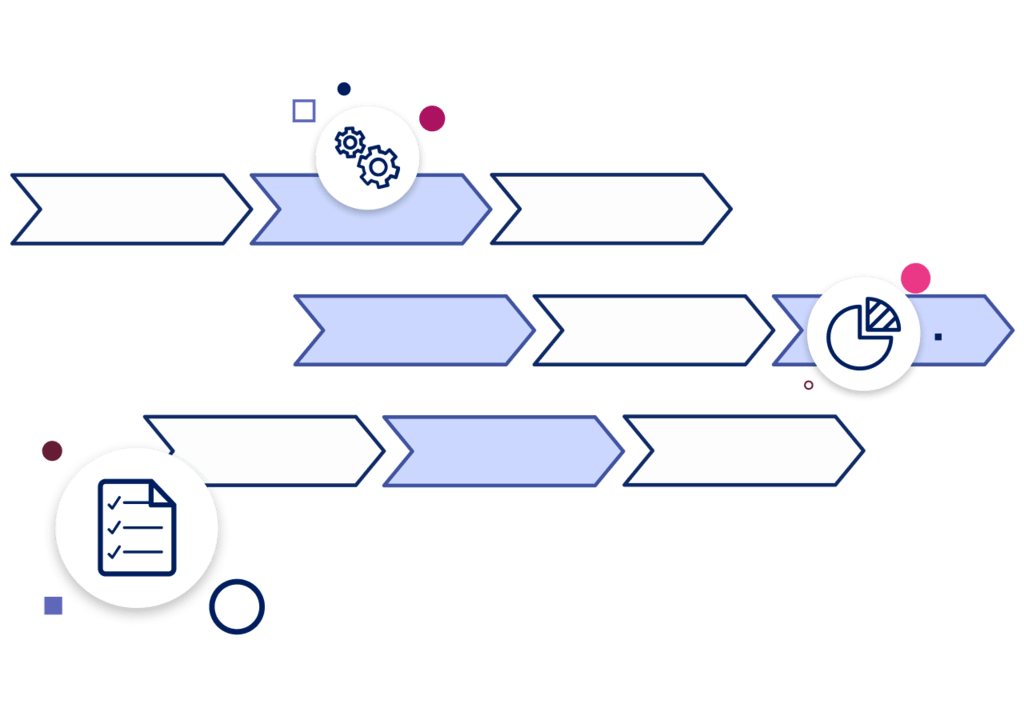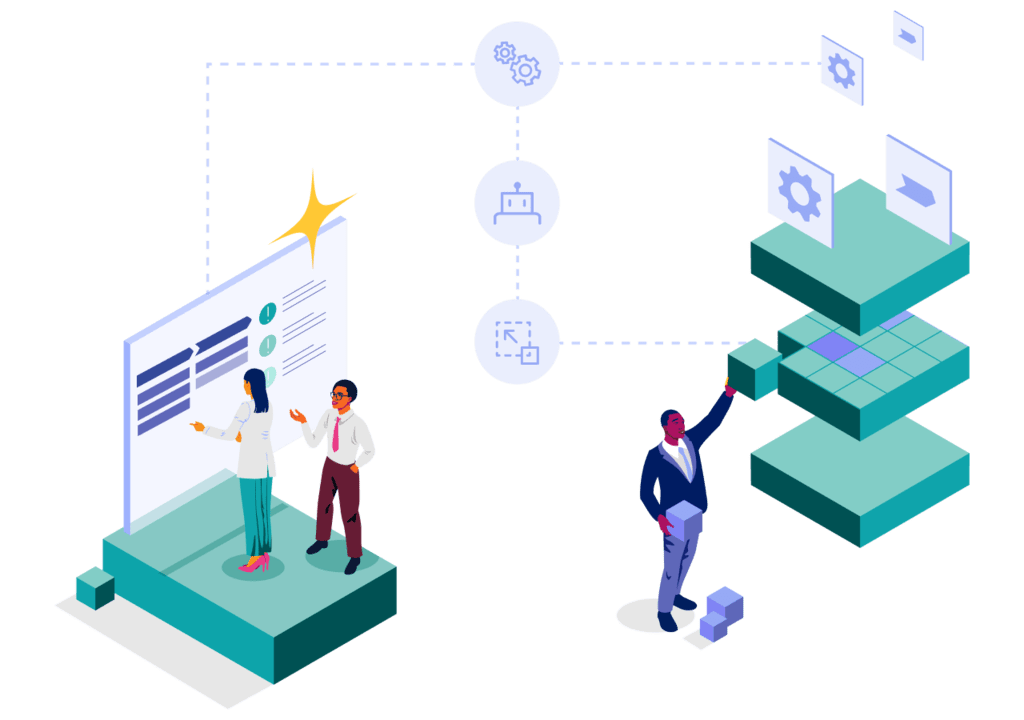AI workflow automation
Leveraging AI to streamline and optimize business processes

What is AI workflow automation?
AI workflow automation refers to the use of AI to streamline, optimize, and automate tasks or processes within a workflow. This innovative approach helps organizations increase efficiency by reducing the time and effort typically spent on repetitive, mundane tasks.
Why is AI workflow automation important?
AI workflow automation is important because it fundamentally transforms how businesses operate. Some of the key benefits of AI workflow automation are:
- Increased efficiency: AI integration can reduce the time employees spend on repetitive and mundane tasks, thereby increasing overall productivity.
- Reduced errors: AI systems provide more consistent and accurate outputs than manual processes, thereby minimizing the risk of costly mistakes and enhancing the quality of work.
- Improved decision-making: AI automation delivers data-driven insights that can aid employees in making informed decisions, thus optimizing operations as a whole.

How does AI workflow automation work?
AI workflow automation works by integrating AI into business processes to streamline and optimize tasks, thereby transforming how organizations operate. This integration usually involves adopting AI technologies like machine learning, natural language processing, and robotic process automation, which allow businesses to handle repetitive and time-consuming tasks more efficiently.

Develop faster with Pega GenAI Blueprint™
Go from idea to app in a flash with the power of Pega GenAI™.
Key features of AI workflow automation
Task automation
Accelerates workflows and minimizes the risk of human error
Data processing
Provides invaluable insights and drives data-informed decision-making
Predictive analysis
Enables businesses to anticipate trends and prepare accordingly
Natural language processing
Facilitates natural interactions with customers and employees
Real-time monitoring
Allows businesses to track workflows as they happen
Workflow optimization
Ensures that operations are not just automated, but continually evolving
How to implement AI workflow automation
Implementing AI workflow automation involves several structured steps, each essential for ensuring a smooth transition and effective integration.
It is important to conduct a thorough needs assessment to identify which processes can benefit most from automation. This helps in prioritizing tasks that will yield the highest efficiency and ROI.
Next, selecting the right AI tools and platforms tailored to the specific needs of your organization is crucial. These tools should be able to integrate seamlessly with your existing systems.
Once the tools are chosen, a detailed plan for deployment is needed, which includes setting clear objectives, timelines, and responsibilities.
Finally, continuous monitoring and evaluation post-implementation are vital to tweaking and optimizing the workflow for even better performance.
Challenges of AI workflow automation
- Complex implementation: The need to ensure that AI solutions integrate seamlessly with existing workflows and legacy systems could require significant customization.
- Security risks: Automated systems often handle sensitive data, making them targets for cyber threats if not appropriately secured.
- Resistance to change: A shift toward automation can lead to resistance to change among employees who may feel threatened by the automation of tasks traditionally performed by humans.
How to mitigate AI workflow automation challenges
- Strategic planning
- Robust security measures
- Comprehensive training programs


Choosing the right AI workflow automation tool
Selecting the most suitable AI workflow automation tool is a crucial step that requires careful consideration of both your organization's specific needs and the inherent capabilities of the tool itself. This process begins with a thorough understanding of the tasks that you aim to automate and the objectives you wish to achieve, as this clarity helps narrow down the list of potential tools. Moreover, it's essential to evaluate the scalability of the tool; ensure that it can accommodate future growth and adapt to changing business environments without major disruptions.
As a leading provider of AI-powered workflow automation solutions, Pega can help you on your AI journey.
Frequently asked questions about AI workflow automation
Some of the key technologies behind AI workflow automation are machine learning, natural language processing, robotic process automation, and of course, AI.
Some of the metrics to consider when measuring the success of AI workflow automation initiatives are:
- Return on investment (ROI)
- Net Promoter Score (NPS)
- First contact resolution
- Customer churn rate
- Reduction in processing time
Integrating AI workflow automation into existing systems requires a strategic approach. Key strategies include starting with simple, low-risk projects and gradually expanding; focusing on workflows with high manual effort or frequent errors; ensuring data quality and integration; choosing user-friendly, scalable tools; training employees and addressing concerns; and monitoring performance to optimize processes. A phased, continuous improvement approach minimizes disruptions and maximizes benefits.
